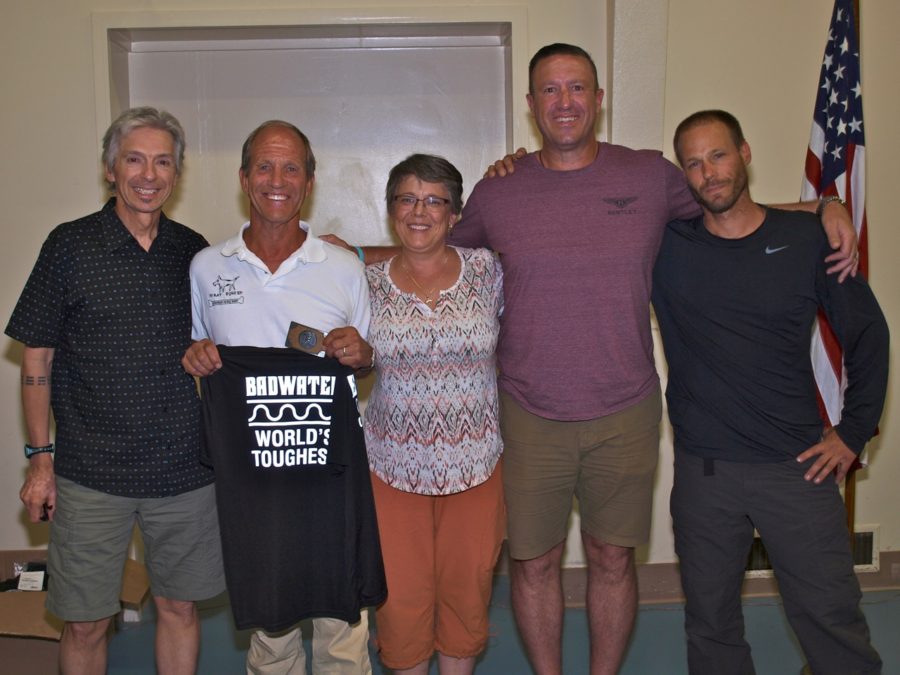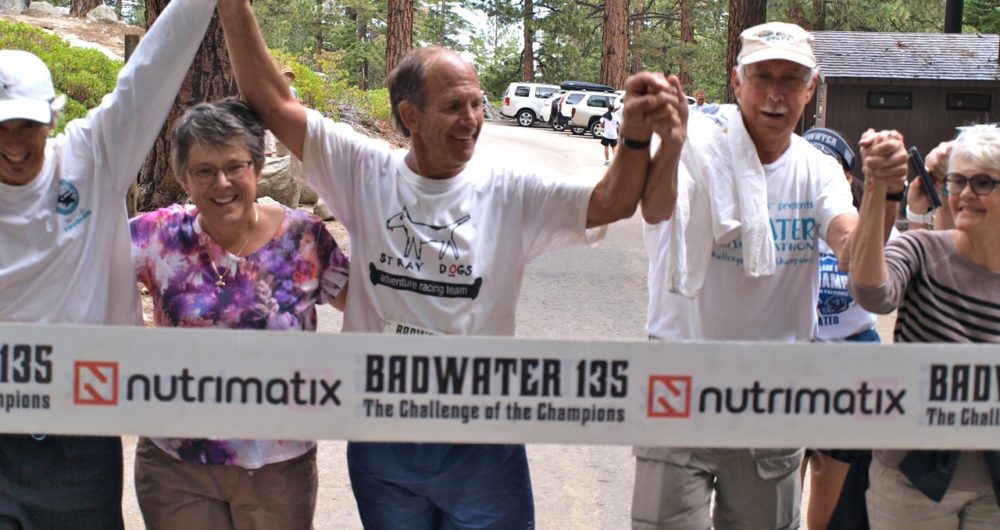Heat Training Tips from a 20-Time Badwater 135 Finisher
Heat Training Tips
By Marshall Ulrich, 20-time Badwater 135 finisher
Are you planning to do a run or race in one of the hot deserts of the world? If so, you need to heat train! Let’s get you ready so you can put your dreams in action!
Heat training is one of my favorite subjects, as I’ve had to prepare for more than 25 crossings of Death Valley, in July, as well as other desert races.
A few things to keep in mind as you are heat training: It is possible to train, or acclimate to heat. Your body learns to sweat more, your veins come to the surface to aid in cooling, and your kidneys and lymph system learn to retain more sodium and other electrolytes. While humidity is a factor in some places, it is not much of a factor in deserts; less humidity means better evaporative cooling.
Heat training can be done anywhere, as long as you have access to a dry sauna:
- Start heat training 6 to 8 weeks (4 weeks minimum) before your desert event.
- Always drink plenty of water.
- Be sure to add electrolytes (my favorite is Sustain tablets), including sodium, potassium, calcium, and magnesium.
- Weigh yourself before and after you go in the sauna; drink at least 2 cups of fluid for every pound lost.
- Have someone check in on you while you are in the sauna.
Here are week-by-week guidelines.
Week one: Find a dry sauna and set the heat to 180 to 200°F. Dress in swim trunks, weigh yourself, bring your water bottle and a towel to sit on and/or wipe sweat out of your eyes, and step in. Stay in about 20 minutes if you can, then step out of the sauna and take a 5 to 10 minute break at room temperature. Go back in for 15 minutes. Do this twice during the first week. You should notice some caking around your temples as you body “dumps” salt; this is normal. It is very important to drink as much as you can while you are in the sauna and during the break, including electrolytes. Finish with a cool down period/break at room temperature (continue to drink) until you feel like your temperature has returned to normal.
Weeks two and three: Go to the sauna two or three times a week. Stay in about 20 minutes, take a 5 to 10 minute break, go back in for 15 minutes, take another 5 to 10 minute break, then head back in for another 15 minutes. Finish with a cool down period. The amount of salt that your body is dumping should be decreasing, and you should be increasing the amount of water you’re drinking as your body learns to sweat sooner, and more, to cool you more effectively.
Weeks four and five: Go to the sauna three to four times a week. Stay in at least 30 minutes at a time, if you can, but continue to take 5 to 10 minute breaks. It is not necessary to exercise while in the sauna, but it helps; the simplest is to jog in place. If you want to add exercise in the sauna, this is the time to do it, as your body has begun to acclimate to the heat.
The final week(s): You should be able to stay in for about an hour with two to three 5-minute breaks, and you should be doing this three to four times a week. Your consumption of water should be almost double as you will be sweating more, sooner, for longer. Your sweat will not taste as salty.
Remember, you are stressing your body and you need to allow it to recover, so don’t drive around with the heater on in your car! This serves very little purpose and can cause serious harm if you pass out and have an accident.
An alternative to visiting the sauna is waiting until the heat of the day reaches 90 degrees and above, and run in dark sweats (top and bottom, top being most important). Start gradually as you did in the sauna and work up to about an hour and a half run. Take lots of water and drink, drink, drink, remembering to replace your electrolytes.
With both training scenarios, make sure you are peeing and monitor the color; it should be a light straw color. If it’s darker than that, you’re not drinking enough. A runny nose also signals good hydration. You can also pinch the skin on the back of your hand to check how quickly it rebounds—it should do so almost instantly; if it stays up in a tent shape, you’re not hydrating enough.
With appropriate heat training you can safely put your desert racing dreams in action!
##
The ultimate endurance athlete, Marshall Ulrich has run more than 120 ultramarathons averaging over 125 miles each, completed 12 expedition-length adventure races, and climbed the Seven Summits all on his first attempts. As of 2015, he is a 20-time finisher of the world’s toughest footrace, the Badwater 135 Ultramarathon, including winning the race in 1991, 1992, 1993, and 1996.
Marshall finished the first-ever circumnavigation on foot of Death Valley National Park, about 425 miles in one of the hottest, driest places on earth, during the most blistering month in U.S. history (July 2012). He’s ranked this expedition as tougher than ascending Mount Everest, but not as challenging as his record-setting transcontinental run of more than 3,000 miles from San Francisco to New York City, which was the subject of his memoir, Running on Empty.
In his sixties, Marshall inspires adventurers, active and armchair athletes, and a growing general audience by sharing his experiences and defying the ideas of “too far,” “too old,” and “not possible.”
More info at marshallulrich.com

Marshall and his support team celebrate his 20th Badwater 135 finish in 2015!









